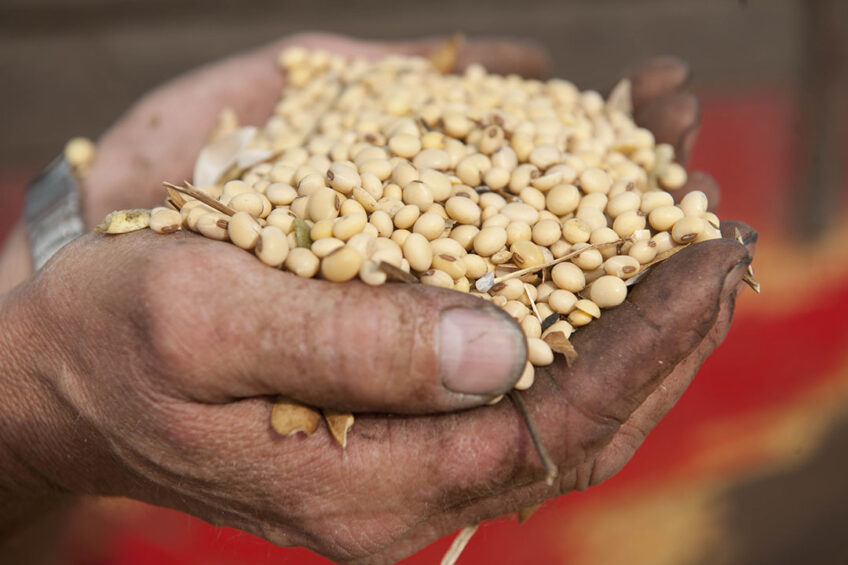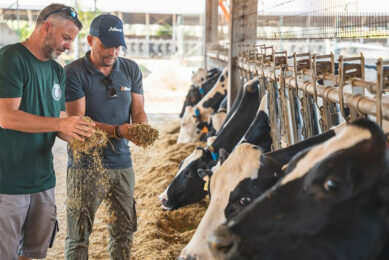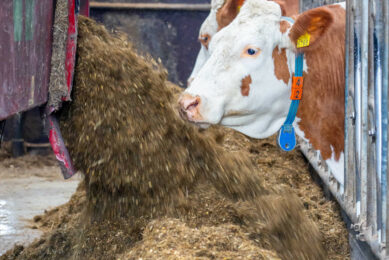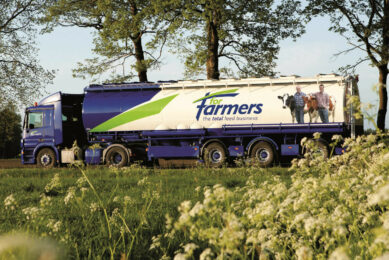Soybeans situation: 2021 and beyond

Soybeans are critical in sustaining the current human population, but it also brings huge sustainability concerns in terms of cultivation in South America.
Large amounts of native habitat have already been destroyed for activities such as pulp production, beef production and soybean cultivation, mostly for animal feed.Among plant protein ingredients, soybeans have the highest crude protein content, about 40% depending on global location. They also have a balanced amino acid profile and very good digestibility.
It’s no surprise, then, that in 2021 (as explained in a June 2021 report in the journal Nature Sustainability), soybeans are the largest global source of protein for livestock feed. The authors, who hail from academic institutions all over the world, note that global production of soybeans has more than doubled since 2000, mostly from new acreage (about 70% of production) but also from yield gains due to advances in soybean genetics and cropping practices. Soybeans are grown in about 100 countries.
Surge in soybeans
“More than half of the world’s soybean production currently resides in South America, where soybean harvested area has increased since 2000 by 160% in Brazil and by 57% in Argentina,” the researchers state. “Over the same period, China’s soybean import from Brazil has surged by 2,000%, mostly for providing animal feed to meet increasing meat consumption.”
At the same time, trade tensions between China and the US (a country from which China also imports soybeans) are expected to result in even more soybean imports into China from South America in future.
“China is the biggest source of soybean demand,” explains Stefan Vogel, global sector strategist, grains & oilseeds, at RaboResearch Food & Agribusiness. “Generally, whole soybeans are imported by China for animal feed, mostly from Brazil and the US with some from Argentina, and are processed into meal there. The hot market is hog feed, although chicken feed production has made a jump recently as well.”
China is rebuilding its national pig herd after heavy losses in recent years due to African Swine Fever. Currently, there are over 440 million live pigs in China, notes Asim Anand, senior editor at SP Global.
Brazil also exports sizeable amounts of whole soybeans to Europe and additional volumes to Asia, the Middle East and other parts of the world, says Vogel. Soybean meal produced in Brazil is exported to many countries, with Europe being the largest destination followed by countries in eastern and southern Asia.
“We expect soybean acreage in Brazil to continue to increase,” says Vogel. “In the past 5 years, it has been 2-3% a year, but already for this year’s crop it was close to 4.5%. And it may be even larger than that in 2022 as demand is strong and farmers are making good margins given high global prices and a relatively weak Brazilian currency.”
EU and Europe
Vogel notes that in the EU, there is a relatively stable livestock population and, while soybean production in the EU has increased over the last decade, meal made for stock feed from EU soybeans only currently amounts to about 7% of what’s needed.
“We need 28-29 million tonnes in the EU, not including the UK, and only about 2 million tonnes thereof is from soybeans domestically grown,” he says. “The rest is imported, with over half of the EU’s needs as soybean meal mostly from Brazil and Argentina. The remaining 35% or so stems from imported soybeans processed in the EU, again largely from Brazil and Argentina, and little from North America and Paraguay. At this point and for the foreseeable future, the EU will have to continue to import soybean meal for livestock feed if we want to keep up current meat consumption.”
However, Europe Soya President Matthias Krön notes that if we look at all of Europe, soybean production is growing and the potential to increase acreage is very high. He explains that soybeans are an excellent choice for crop farmers across Europe, especially in Ukraine and Serbia, because there are now fewer crop protection products available and nitrogen fertiliser will continue to be very expensive. “Soybeans fix their own nitrogen and grow well in many regions without any products,” Krön observes. “The crop is also able to be grown in more northern countries, as corn is, and more farmers are learning how to grow soybeans. There are also subsidies available. There are 10 million tonnes grown now in Europe and this will grow to 15 million tonnes in the next 9 years, of which 80% goes into animal feed.”
“Globally, the question of whether we have reached ‘peak’ meat consumption is very difficult to answer,” he says. “Consumption levels in China are similar to that of Europe now and Europe’s is decreasing. I advise everyone, don’t underestimate European soybeans to fill our livestock feed needs. We will continue to use a mixture of both imports and domestic soybeans with a goal of more sustainable global soybean production everywhere.”
To help European agriculture be more sustainable, the European Feed Manufacturers’ Federation released its most-recent soy sourcing guideline document in February 2021.
Other countries
Apart from China and the EU, Anand says, Thailand, Turkey and Russia are the major importers of South American soybeans, along with Vietnam, Indonesia and Algeria. However, he adds that soybean meal for feed is in huge demand within both Brazil and Argentina amid their soaring meat production for export, making it tough for soybean exporters to procure the volumes they’d like to ship.
He adds that Argentina’s weak economy, high export taxes and dual-currency system are challenges for soybean export there in comparison to Brazil.
Soy cultivation areas in South America
According to the scientists who published the Nature Sustainability paper, soybeans are grown in many areas of South America. They used both satellite imagery and site verification to identify the main areas to be the Amazon rainforest, the Atlantic Forest, the Cerrado scrubland, the Chaco dry forest, the Chiquitania savanna, the Pampas grassland, the Pantanal wetland and the Caatinga thorn-scrub forest. Their study reveals that soybean coverage in South America increased from 26.4 million ha in 2001 to 55.1 million ha in 2019, an area larger than California.
Regarding the past season of 2020-21, according to the Brazilian government report Projections of Agribusiness Brazil 2020/21 to 2030/31, soybean production currently sits at about 135.4 million tonnes, the most ever produced. Production in Brazil is led by the states of Mato Grosso with 27%, Rio Grande do Sul with 15%, Paraná with 15%, Goiás with 10% and Mato Grosso do Sul with 8%. As stated in the report, factors such as production expansion, cattle herd size and land prices “show a clear trend of agricultural growth towards the north, mainly towards the states of Rondônia, Pará and Tocantins”.
In 10 years (2030-31), Brazilian soybean production is projected to be 175.4 million tonnes, an increase of almost 30%. Domestic consumption of soybeans is expected to reach 59.1 million tonnes at that point, but could reach as high as 66.8 million tonnes. “It should grow in the coming years just above the consumption of corn, which is projected at 22.8% between 2021 and 2030,” state the report’s authors, “both products essential in the preparation of animal feeds”.
Brazil’s soybean exports in 2030-31 are projected to be 116 million tonnes. However, the US Department of Agriculture (USDA) projection is 121.5 million tonnes, which will total 55.5% of the world soybean exports.
USDA Economic Research Service researchers, including senior economist, Fred Gale, explain that (as indicated in their report USDA Agricultural Projections to 2030) “Chinese demand will drive continued growth in soybean trade during the next 10 years, as world soybean imports climb 46.2 million tonnes (26.7%) to 219.2 million tonnes.” Brazil is expected to be the predominant country of soybean export through to 2030. In addition, the dynamics of world production have changed a great deal in recent decades.
In a new book called Crop Physiology Case Histories for Major Crops, the authors note that in the early 1990s, the US accounted for half of global soybean production, while Brazil and Argentina produced about a quarter. “The share of global soybean production amongst the 3 countries has changed drastically during the past 3 decades,” they state, “with Brazil and Argentina together now accounting for half of global production and the US producing a third.”
There are a few main factors that may affect world soybean production for animal feed, chief among them being the success of plant-based food products and world population. The United Nations is projecting the world’s population to be 9.7 billion by 2050.
Join 13,000+ subscribers
Subscribe to our newsletter to stay updated about all the need-to-know content in the dairy sector, two times a week.










